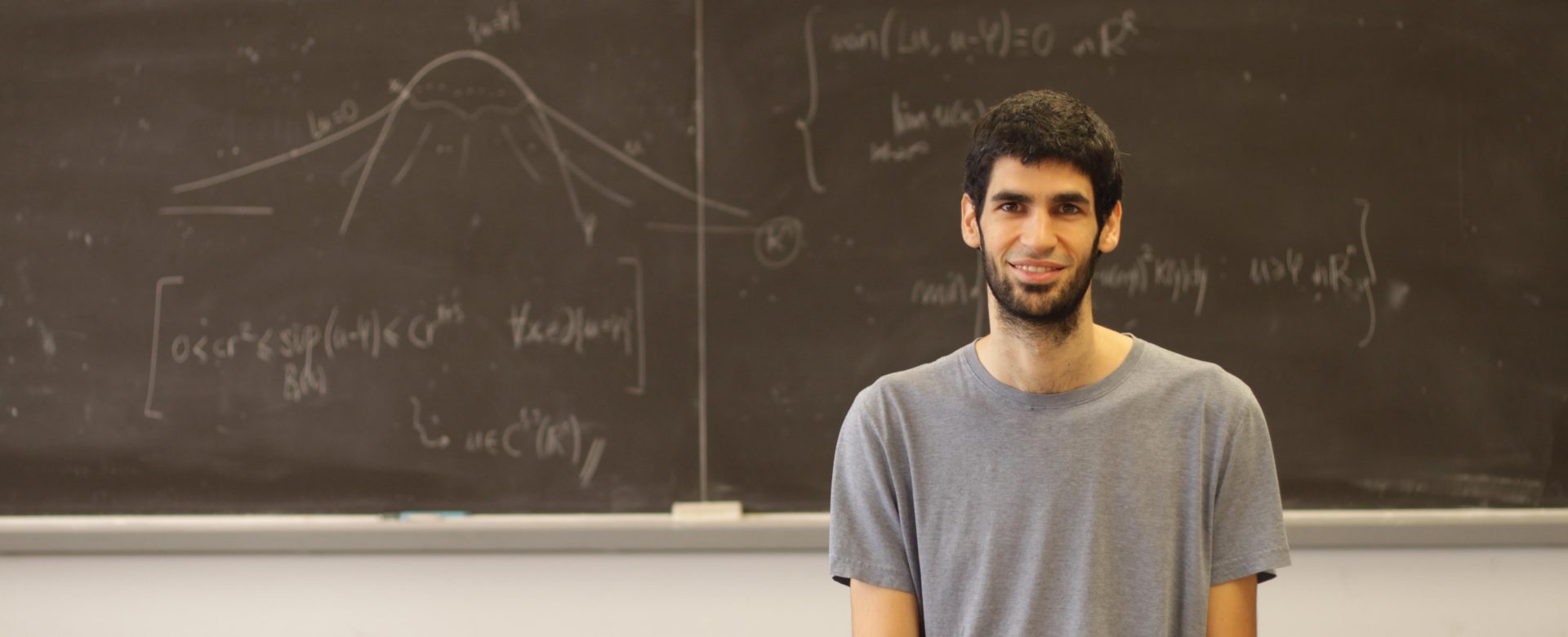
“The Equations That Move the World”: lecture by mathematician Xavier Ros Oton
A problem born amid the Arctic ice floes of the late 19th century, where explorers risked their lives in successive expeditions to find the elusive North-West Passage, is now occupying the mind of mathematician Xavier Ros Oton (Barcelona, 1988). The Stefan problem, as it is known, describes the formation of ice in polar waters, and belongs to the branch of mathematics dealing with such disparate processes as the propagation of epidemics, atmospheric turbulence and financial asset pricing.
10 April, 2018
Ros Oton, a pure mathematician, lives in an abstract world removed from the cut and thrust of applications. But he takes great pleasure in telling non-mathematicians the story of the problems he has to grapple with, all of them drawn from the most palpable reality. The “Equations That Move the World” and why it is increasingly important to understand them form the topic of the lecture he delivered on Thursday, 12 April in the Madrid headquarters of the BBVA Foundation.
Ros Oton holds the José Luis Rubio de Francia award for the best young Spanish mathematician, bestowed by the Real Sociedad Matemática Española (RSME) on researchers aged under thirty-two. The BBVA Foundation supports the award winner with a grant of 35,000 euros.
Partial differential equations (PDEs), as Ros Oton explains, “arise in the real world; we only study them.” There are dozens of examples, many of which have been setting the agenda of physicists and mathematicians for decades, if not centuries. Physicists formulate them, trying to capture reality with the greatest possible accuracy, while mathematicians try to solve them. Failure to do so does not damp their spirits: “The unknown quantity,” says Ros Oton, “is not a number, but something far more complex, more like a series of variables that change over time. The most we aspire to is to learn something about these equations; just proving a solution exists is a fine result, even if we don’t know what it is. Finding approximations to that solution may in itself be a big step forward for the engineers.”
Among the most famous PDEs are the heat equation, dealing with how heat spreads through a material; the Navier-Stokes equations, describing the motion of fluid substances, whether it be air around a plane or the ocean currents; Einstein’s equations of space-time curvature; the Schroedinger equation, whose description of the behavior of particles is at the heart of quantum mechanics; or the Black-Scholes equation, used to set financial asset prices.
PDEs, moreover, are gaining in importance, since the calculating power of today’s computers enables more and more processes to be modeled. In biology, for instance, models are in use for everything from the progress of a disease to the dynamics of a given population, and these models rely heavily on PDEs. In astrophysics, aeronautics, economics …, as Ros Oton puts it: “Mathematics is conquering more and more terrain.”
His own favorite equations are “those that come up in more than one place”; that is, equations drawn from very different backgrounds that nonetheless have much in common. Such connections point to an inner structure in the workings of nature that is only revealed to mathematicians: “For a mathematician, the problem of heat diffusion in a material may be the same as that of the evolution of a population of organisms, or the prediction of an economic crisis.”
The Stefan problem, for instance, is not just about the transition from ice to liquid water, but deals with any system where the boundary between phases is constantly moving. This is a defining characteristic of worlds such as finance, which is why the Stefan problem also has a longstanding place in financial mathematics. And the connection makes sense, Ros Oton points out, because both systems are subject to a high degree of randomness: “Water freezes at 0ºC, but it is impossible to determine the exact instant when each point within the liquid reaches this temperature, there are too many variables. And a similar thing happens when you try to estimate the price of certain financial options.”
Xavier Ros Oton earned a PhD in Mathematics from the Universitat Politècnica de Catalunya (Spain). He worked at the University of Texas at Austin (United States) from 2014 to 2017, and currently holds a professorship at the University of Zurich (Switzerland). He discovered his passion for the discipline when his mother, a secondary school math teacher, encouraged him to join in a math olympics. He recalls how this opened up “a new world,” ruled by the principle of “discover and demonstrate,” very different from the subject he had been taught in school. He admits that he finds it “very hard” to explain the beauty he sees in mathematics, but gets tremendous enjoyment out of sharing the emotion.
